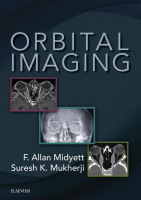Physical Address
304 North Cardinal St.
Dorchester Center, MA 02124

Imaging Magnetic resonance imaging (MRI) has the unique ability to characterize hemorrhage using hemoglobin’s paramagnetic qualities and makes it ideally suited to evaluate VLM. MRI clearly demonstrates the internal structure of subacute and chronic hemorrhagic cysts based on paramagnetic qualities.…

Key points Definition: Orbital venous varix (OVV) is a rare intraorbital vascular malformation composed of single or multiple venous channels that may enlarge intermittently with changes in venous pressure. Synonym: Orbital venous malformation. Classic clue: Patients present with enophthalmos or…

Key points Definition: Cavernous sinus thrombosis (CST) is a potentially life-threatening complication usually secondary to infection, commonly coming from nose, sinuses, ears, or teeth. Synonyms: Cavernous sinus thrombophlebitis, septic cavernous sinus thrombosis. Classic clue: Patient presents with recent-onset HA, photophobia,…

Key points Definition: Carotid-cavernous fistula (CCF) is an abnormal connection between the carotid artery and/or its branches and the cavernous sinus (CS). Classic clue: Patient presents with an acute onset of Dandy’s triad with pulsatile proptosis, chemosis, and bruit accompanied…

Key points Definition: Congenital anophthalmia (CA) is a rare malformation causing unilateral, or bilateral eye absence. Classic clue: Anophthalmia is discovered at delivery and frequently found by fetal ultrasound (US). Anophthalmia is the medical term for absence of eyes coming…

Key points Definition: Congenital orbital teratomas (COTs) are rare tumors. They are usually benign, complex masses with cystic and solid components containing a mixture of fat, calcium, and bone. Synonyms: Orbital teratomas, teratomas. Classic clue: Huge orbital mass containing cystic…

Key points Definition: Pathologic entity caused by abnormal hypertrophy of the ocular hyaloid system. Classic clue: Child presenting at or soon after birth with leukocoria, micropthalmia, fluid-fluid level, no calcifications, and persistent Cloquet’s canal is virtually pathognomonic. In normal embryologic…

Key points Definition: A coloboma is caused by a rare congenital defect with failure of the embryonic intraocular fissure to fuse during the first trimester of fetal development resulting in an elongated or malformed globe. Colobomas may arise in any…

Key points Definition: Rhabdomyosarcoma (RMS) is a relatively rare sarcoma, frequently found in children aged between 1 and 5 years. Classic clue: A 5-year-old old child is referred by a pediatrician with a history of possible recent trauma, developing rapid…

Key points Definition: Esthesioneuroblastoma (ENB) is a rare neuroendocrine malignancy of neural crest origin arising from olfactory epithelium near the cribriform plate and the nearby nasal cavity. ENB may invade the orbit, causing ophthalmic signs and symptoms. Synonym: Olfactory neuroblastoma.…